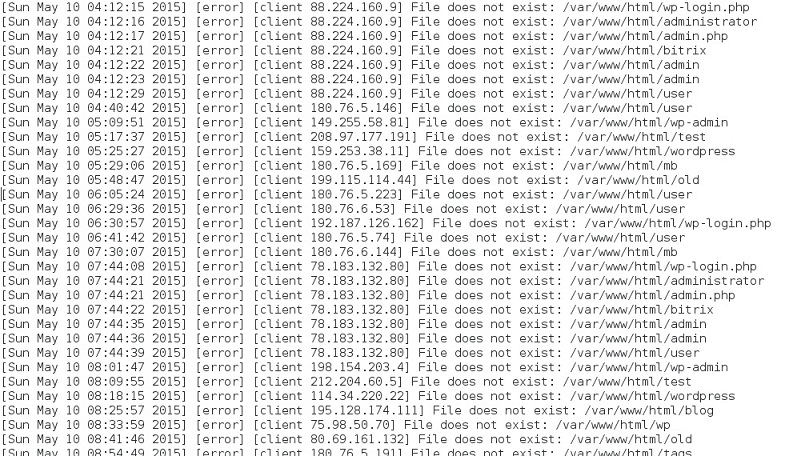SOC Analyst Pyramid
Introduction
Last weekend, I did a 10 minute fireside chat during lunch at BSidesSATX 2015 [1]. It was an informal presentation, where I discussed some of the issues facing security analysts working at an organization's Security Operations Center (SOC).
With only 10 minutes, the largest part of that presentation covered a "SOC analyst pyramid" of activity any organization will encounter.
For the presentation, security analysts are defined as people who monitor their organization's network for near-real-time detection of malicious activity. Security analysts review alerts from their organization's intrusion detection systems (IDS) or security information and event management (SIEM) appliances. These alerts are based on various sources, such as network traffic and event logs.
SOC Analyst Pyramid
Below is a visual representation of this pyramid:
As seen in the image above, the pyramid from top to bottom reads:
- Targeted attacks
- Malicious activity - not blocked
- Malicious activity - blocked or not applicable
- False positives or non-threat
Base of the SOC Analyst Pyramid
The base of the SOC analyst pyramid consists of false positives or valid activity unique to your organization's network. In my years as an analyst, investigating this activity took up the majority of my time. At times, you'll need to document why an alert triggers a false positive, so it can be filtered and allow the team to focus on real suspicious activity.
In my experience, no matter how well-tuned your security monitoring system is, analysts spend most of their time at this level of the pyramid.
Next Tier: Malicious Activity - Blocked or Not Applicable
The next level involves malicious activity that's either blocked or not applicable. Blocked activity includes spam with malware attachments (malspam) blocked by your organization's spam filters. Non-applicable activity includes certain types of scanning. The intent is malicious, but the scans are blind and not applicable to the targeted host. For example, here's a short list of activity from the error logs of a server I run:
That server doesn't run WordPress, nor does it have any sort of web-based administrative login, but I'll find WordPress-based scans hitting the server's IP every day. That shows malicious intent, but it's not applicable.
SOC analysts worried about near-real-time detection of malicious activity generally don't spend much time with this tier of the pyramid.
Next Tier: Malicious Activity - Not Blocked
The next tier of the pyramid involves malicious activity that somehow makes it past your organization's various security measures. This level includes drive-by infections from an exploit kit after viewing a compromised website. Depending on your organization's policies, adware might be an issue. Resolving issues involving adware or potentially unwanted programs (PUP) might give SOC personnel practice for resolving hosts infected with actual malware. Just make sure analysts don't focus on the adware/PUP. The focus of a SOC should always be on malicious activity.
This level of the pyramid is where analysts develop their skill in recognizing malicious activity. Exploit kit traffic might not infect a user's computer. SOC personnel should be able to examine this sort of malicious traffic and determine if a host actually became infected. After an alert, I've seen too many people assume a host was infected without digging in deeper to see what actually happened.
Malware or compromised hosts found at this level of the pyramid are not targeted. This type of malicious activity is a concern for any organization. It's not limited to your employer.
Top of the Pyramid: Targeted Attacks
This tier is where a SOC proves its value to an organization. If bad actors, criminal groups, or hostile foreign agents gain a foothold in your organization's infrastructure, you might not be able to get rid of them. Detecting intrusions early and preventing these bad actors from further access is extremely important. Any number of sources will tell you data breaches are not a matter of "if" but "when" [2][3][4].
Targeted attacks include spear phishing attempts to gather login credentials from specific members. Personnel using a chat system for sales or support can also be targeted. Denial of Service (DoS) attacks or Distributed DoS (DDoS) attacks are usually at this tier. Watering hole attacks [5] are also an issue.
Final Words
I've been a SOC analyst for two employers: one was the government, and the other is private sector. In both cases, I believe the SOC analyst pyramid applies. Feel free to leave a comment, if you have any opinions on the matter.
---
Brad Duncan, Security Researcher at Rackspace
Blog: www.malware-traffic-analysis.net - Twitter: @malware_traffic
References:
[1] http://www.securitybsides.com/w/page/91978878/BSidesSATX_2015
[2] http://www.securityinfowatch.com/article/12052877/preparing-for-your-companys-inevitable-data-breach
[3] http://www.maslon.com/webfiles/Emails_2015/LegalAlerts/2015_LegalAlert_CyberSecurity_DataBreach_webversion.html
[4] http://www.hechtins.com/blog/data_breach--not_if_but_when.aspx
[5] http://www.trendmicro.com.au/vinfo/au/threat-encyclopedia/web-attack/137/watering-hole-101





Comments